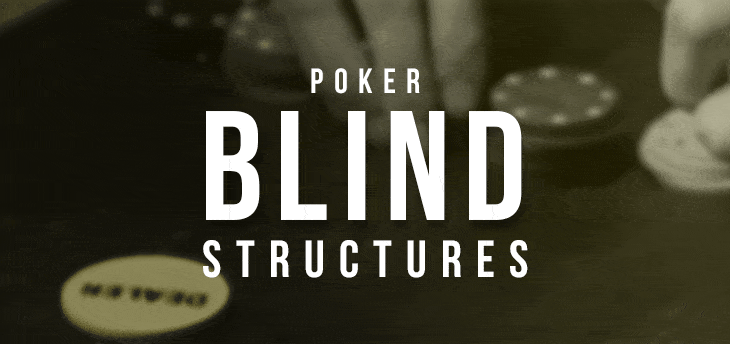So, you want to delve into the high-stakes world of poker tournaments? Great! Whether you’re looking to dominate your next friendly Friday night game or seeking to topple the Titans at the World Series of Poker, understanding blind structures is essential to your strategy.
But hey, who wants a stuffy, dry lecture? No worries, my friends! Let’s approach this like a whirlwind casino crawl, shedding light on blind structures, tossing in some strategy tweaks, and spicing it up with a dash of humor. Buckle up, poker enthusiasts; it’s going to be a thrilling ride!
The Wonderful World of Blinds
“Blinds,” you ponder, “like the window dressings?” If only it were that simple! The term ‘blinds’ in poker refers to mandatory bets made by some of the players before any cards are dealt. This creates a starting pot, a prize for which to contend, a golden carrot, if you will, to incite action.
There are two types of blinds: the small blind (SB) and the big blind (BB). The BB is typically twice the SB’s size. There, simple math and poker, who knew?
Now, poker tournaments aren’t a languid Sunday afternoon stroll. No sir, they’re more like a high-speed chase on the autobahn. Blinds increase periodically to inject some pace and drama into the proceedings.

Understanding Poker Tournament Blind Structures
Ever heard of the phrase, “Time and tide wait for no man?” In poker tournaments, replace “tide” with “blinds,” and you’ll understand the game’s transient nature. Blind structures dictate how frequently and by how much the blinds increase. It’s the unseen clockwork driving the poker tournament machine.
Standard Structure
A standard blind structure begins with small blinds and gradually ascends over a reasonable timeframe. It’s the tortoise of the poker world; slow, steady, and offers ample time to players to form strategies and make their moves. But remember, slow and steady only wins the race if you’re actually in the race. Keep an eye on those blinds!
Turbo Structure
Next, we have the turbo structure, which is like the standard structure’s caffeine-jacked cousin. It’s perfect for thrill-seekers and those who love living on the poker edge. The blinds escalate faster, forcing a more aggressive style of play. It’s the poker equivalent of being chased by a swarm of bees; you’d better run (or in this case, bet) fast!
Hyper Turbo Structure
Finally, there’s the hyper turbo structure, a.k.a. the ‘Ferrari of Blind Structures.’ With these, blinds increase at lightning speed, providing a high-speed, adrenaline-pumping poker experience. In this case, you aren’t just being chased by bees; it’s a whole pack of ravenous wolves!
The Double-edged Sword of Blind Structures
Ah, so the blinds go up, the pressure mounts, and the weak get crushed, right? Not necessarily. Yes, the escalating blinds put pressure on players with smaller stacks. But they also provide opportunities to those brave enough to seize them. A well-timed aggressive move can double up your chip stack and position you well for the later stages. Remember, fortune favors the bold!
Adjusting Your Strategy: The Art of Playing the Blinds
Alright, now that we understand what blinds are and how they escalate, let’s talk strategy. How should one adjust to this ever-shifting landscape?
Early Stage: The Gentle Climb
In the early stages, blinds are low compared to your chip stack. It’s the perfect time to sit back, relax, and maybe sip on a metaphorical mojito. Keep your play tight and conservative. There’s no need to rush, so take this time to observe your opponents. Who’s bluffing? Who’s timid? These tidbits will be useful as the blinds go up.
Middle Stage: The Tension Rises
As the blinds start to rise, so should your level of aggression. Start opening up your range of hands, stealing blinds, and putting more pressure on your opponents. It’s like switching from a soft jazz tune to a bit of rock and roll. And remember that information you gathered in the early stage? Time to put it to use.

Late Stage: High-Speed Thrills
Here’s where the real fun begins. The blinds are high, and the stakes are even higher. Short-stacked players will be looking for opportunities to go all-in, and you should be prepared to challenge them if you have the cards. Like a conductor reaching the crescendo of a symphony, this is where champions are made.
A Word on Antes
Before we wrap up, let’s give a quick nod to our little friend, the ante. In many tournaments, an ante is introduced in the later stages. This is a forced bet that every player must contribute each hand, spicing up the game and encouraging more action. They’re like an unexpected spice in a dish, making it even more tantalizing.
Conclusion: To Conquer the Blinds, Understand the Blinds
As we reach the end of our casino crawl, remember that understanding and adjusting to the blind structure is an essential part of tournament poker. Whether the blinds are creeping up slowly or rocketing upwards, your strategy needs to evolve to keep up.
Just like in life, it’s those who adapt that survive, thrive, and ultimately, win. Understanding the poker tournament blind structure isn’t just about knowing when the bets increase; it’s about understanding the rhythm of the game, the ebb and flow of pressure, and using that knowledge to your advantage.
Blinds may seem a mere administrative part of the game, but in reality, they are the silent puppeteers that set the stage for the drama that unfolds. So embrace the blinds, get to know them, and then, outsmart them.
In the game of poker, fortune doesn’t just favor the bold—it also favors the informed. So arm yourself with knowledge, bring your wit and, with a bit of luck, you’ll be the last player standing. Now go forth and conquer the poker world!

